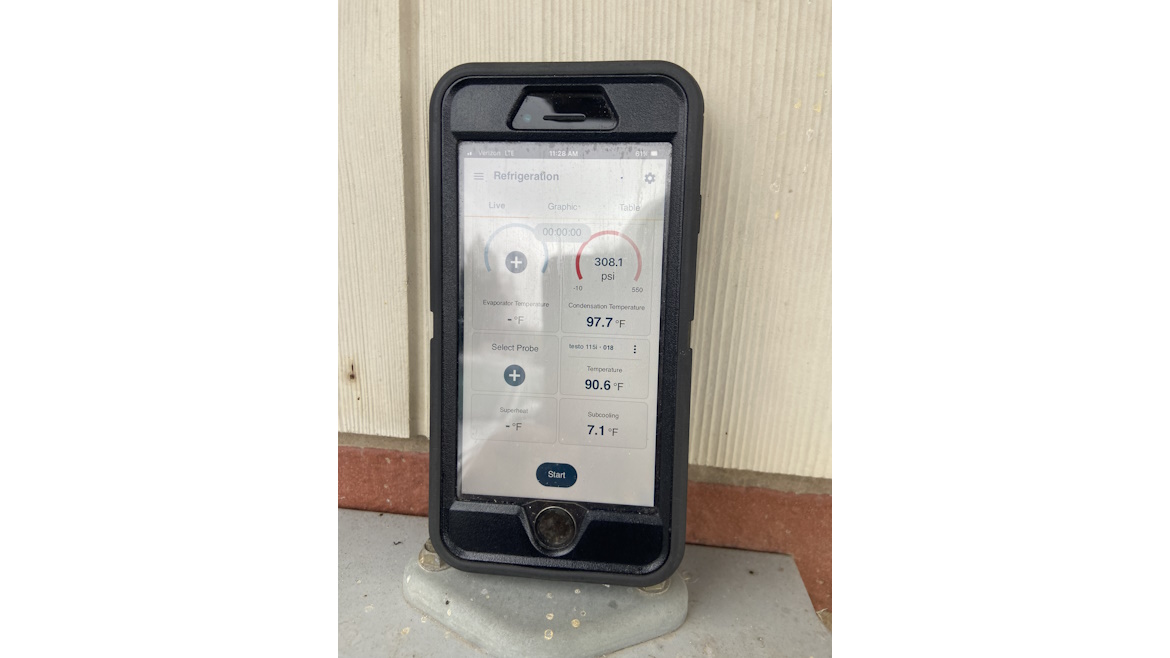When measuring the temperatures and pressures of an operating refrigeration system, it is important to allow it to achieve a steady state operating condition. This allows for the measured pressures and temperatures to more accurately represent the current operational condition of the system.
To achieve a steady state operating condition, it is best to allow the system to operate for about 10 to 15 minutes after a startup or after a defrost cycle. This allows any flow control device, such as a TXV, to adjust to the proper port opening, and more importantly, allows the pipe temperatures to more closely approach the temperature of the refrigerant flowing through them.
When measuring pipe temperatures, we assume the pipe temperature closely aligns with the refrigerant’s temperature. However, this might not be accurate when a system first starts — it might take a while for the two temperatures to achieve a closer equilibrium.
Using a system’s measured pressures and temperatures before a steady state operating condition is achieved may lead to misdiagnosing a system issue or believing there is an issue when perhaps none exists. This is especially true when calculating the evaporator’s superheat value or the condenser subcooling value.
Consider, for example, working on a walk-in cooler using R-404A. The cooler has been off while you changed out one of its evaporator fan motors, and the case temperature rises to 50°F during this time. You turn the system back on and decide to measure the evaporator’s pressure and superheat value to ensure it is working normally after your repair. You measure an evaporator pressure of 62 psig and a suction line temperature of 50°F only after a few minutes of runtime and calculate the superheat value to be 25°F. You determine this to be too high, so you adjust the TXV. However, if you had let the system operate for a while longer, you probably would have seen the suction line temperature drop down to a temperature representing an acceptable superheat value. Now the TXV is probably misadjusted.
Not waiting for a steady state condition could also lead to wasted time on a job. Suppose you are working on a system with an adjustable condenser flooding valve. You decide to adjust the valve to achieve a different minimum liquid pressure during low ambient conditions. When adjusting these valves, it is best practice to make small adjustments and allow the system adequate time to settle out and achieve a new steady state operating condition. Not allowing the system to get to a steady state operation may lead you to make continuous adjustments while trying to achieve your desired result. This can lead to a very time-consuming and frustrating job.
It is important to have patience while working on refrigeration systems. Allowing a system to get to a steady state condition is a must when making certain repairs and adjustments. Not allowing the system to run long enough can lead to inaccurate pressures and temperatures being measured and potentially misdiagnosing a system’s performance.
Whether you require installation, repair, or maintenance, our technicians will assist you with top-quality service at any time of the day or night. Take comfort in knowing your indoor air quality is the best it can be with MOE heating & cooling services Ontario's solution for heating, air conditioning, and ventilation that’s cooler than the rest.
Contact us to schedule a visit. Our qualified team of technicians, are always ready to help you and guide you for heating and cooling issues. Weather you want to replace an old furnace or install a brand new air conditioner, we are here to help you. Our main office is at Kitchener but we can service most of Ontario's cities
Source link



